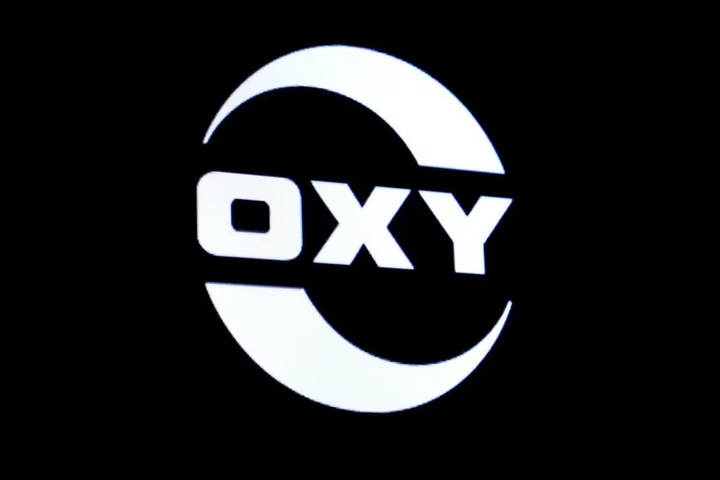By Valerie Volcovici
In Texas, oil and gas producer Occidental Petroleum is constructing a giant facility to suck 500,000 tonnes of carbon dioxide out of the atmosphere annually to keep it from warming the climate, a project backed by hundreds of millions of dollars from investment firm BlackRock.
In Louisiana, a consortium of companies that includes Swiss firm Climeworks is teaming up to build a similar facility that can pull a million tonnes of the greenhouse gas out of the sky each year, boosted by hundreds of millions of dollars in grants from the U.S. government.
The direct air capture (DAC) projects are in neighboring states, but the companies leading them are worlds away when it comes to their views on how carbon removal - an expensive and largely unproven family of technologies to fight or even reverse global warming - should be deployed in a climate-friendly future and the role oil and gas should play in its deployment.
Occidental says some of its carbon would be injected into oil fields to ramp up pressure and raise crude production – a strategy it says that can cleanse the world’s future fossil fuel consumption of climate impact.
Climeworks and its partner Heirloom, meanwhile, says its carbon will go straight into underground storage, and that the technology must go hand in hand with a transition to renewable energy.
The clashing philosophies mirror a global debate underway over the role carbon removal technologies should play to keep the world from exceeding a 1.5 degree Celsius rise that will take center stage at the 28th United Nations climate change conference in Dubai on Nov. 30-Dec. 12.
The COP28 conference's hosts, OPEC member the United Arab Emirates, is promoting the use of carbon removal - a family of technologies to keep excess CO2 out of the atmosphere - as a means of reducing emissions from fossil fuels, as opposed to eliminating the fossil fuels themselves. Scientists have said carbon removal is needed to keep climate goals alive.
That approach has the backing of global producers seeking to continue profiting from fossil fuels, but draws skepticism among environmentalists and some governments who see it as a ploy to prolong the lifespan of oil and gas and who are pushing for tough language at COP28 to phase out fossil fuels completely.
Underscoring the rift, the International Energy Agency (IEA) said last week that the oil and gas industry is over-relying on carbon capture to reduce emissions and called the approach "an illusion," sparking an angry response from OPEC which views the technology as a lifeline for future fossil fuel use.
“We think that no amount of direct air capture as an industry should be used as any justification for prolonging of expanded fossil fuel production,” said Vikrum Aiyer, head of climate policy at Heirloom, which is a partner in the Louisiana facility called Project Cypress.
The differing approaches also reflect an important financial dynamic in the carbon removal industry: In the near term, it is a lot easier to make money trapping carbon if it comes with a perk like higher oil production.
Otherwise, the enormous price tag for world-scale carbon removal would need to fall to governments if there is any chance of these projects surviving.
SAVIOR OR FIG LEAF?
The IEA says DAC would have to capture as much as 1 billion tonnes annually by 2050 if the world is to hit its decarbonization targets, a massive scale-up from the 10,000 tonnes it removes currently.
A major concern is that DAC technology is both expensive and unproven at scale. Capturing carbon using DAC costs somewhere between $600 and $1,000 for each tonne, mainly because of the huge amount of energy required to run the equipment.
There are two commercial DAC facilities now in operation – a Climeworks project in Iceland that can capture just 4,000 tonnes of CO2 a year and Heirloom's project in California that can capture 1,000 tonnes annually, with the rest of the emissions removed by DAC attributed to small pilot projects.
More than 100 other DAC projects are at various stages of development, but it is unclear how many will be completed or when, or how they would survive financially.
More mature carbon capture and storage (CCS) technology, which traps emissions at a point source like a smokestack, also requires a rapid scale up to make a difference. There are 41 operational commercial CCS projects worldwide with the capacity to store 49 million metric tonnes annually, according to the Global CCS Institute - about one-thousandth of the world’s total energy and industry-related CO2 emissions.
Most of those use the carbon for enhanced oil recovery (EOR) or are linked to ethanol plants seeking to generate low carbon credits, according to the institute.
Incoming COP President Sultan al-Jaber has said that the technology to capture or remove carbon is needed in “any realistic scenario” to meet the world’s climate goals. The UAE’s national oil company ADNOC recently teamed up with Occidental to evaluate investment in DAC plants and CO2 sequestration hubs in the U.S. and the UAE.
'LICENSE TO CONTINUE'
Occidental CEO Vicki Hollub has said DAC could give the oil industry “license to continue to operate for the next 60, 70, 80 years.”
The company says its Stratos project in Texas would use removed carbon to recover oil, or otherwise to generate carbon credits that allow it to brand its oil as “net zero,” and the fuels refined from it as “low carbon.”
“What we're saying is that there is a highly transparent, highly credible way of tackling the emissions from those barrels of oil," said Mike Avery, president of 1PointFive, an Occidental subsidiary developing its DAC projects.
Occidental also has a separate DAC hub proposal in Texas that won half a billion dollars in federal grants. That project’s CO2 will be sequestered underground and have no link to oil and gas, the Department of Energy said.
In Louisiana, the proponents of Climeworks and Heirloom's Project Cypress want to make it clear that the technology should have no role in prolonging the future of fossil fuels, even if it means committing to more limited revenue sources than rivals like Occidental.
Their money will be made instead by marketing carbon removal credits to corporations not involved in fossil fuels that wish to offset unavoidable emissions, or to governments seeking to stay on track with climate targets.
“If you use air capture to get more fuels out of the ground, you're taking away market potential for renewables," said Christoph Gebald, CEO of Climeworks. "This is not in alignment with the energy transition.”
(Writing by Richard Valdmanis; Editing by Marguerita Choy)









